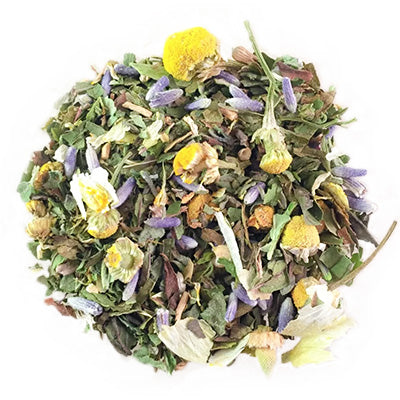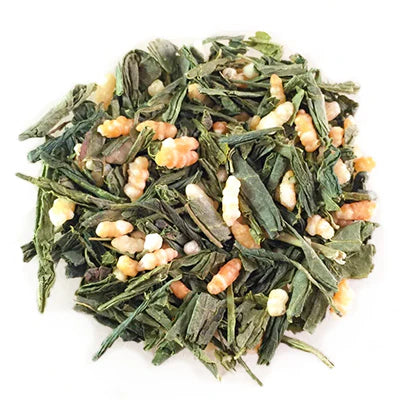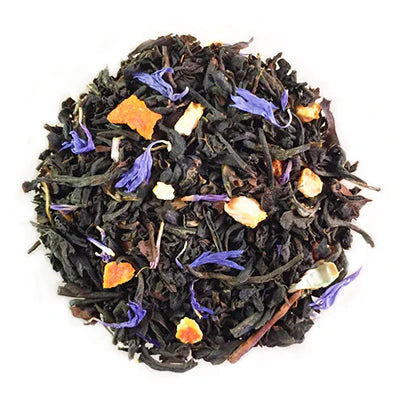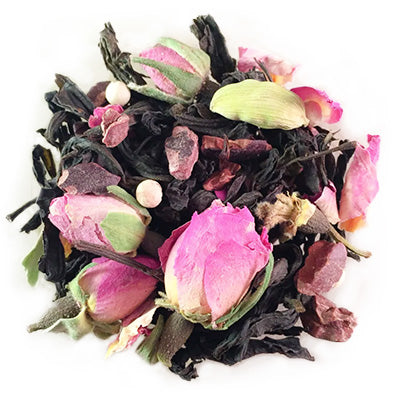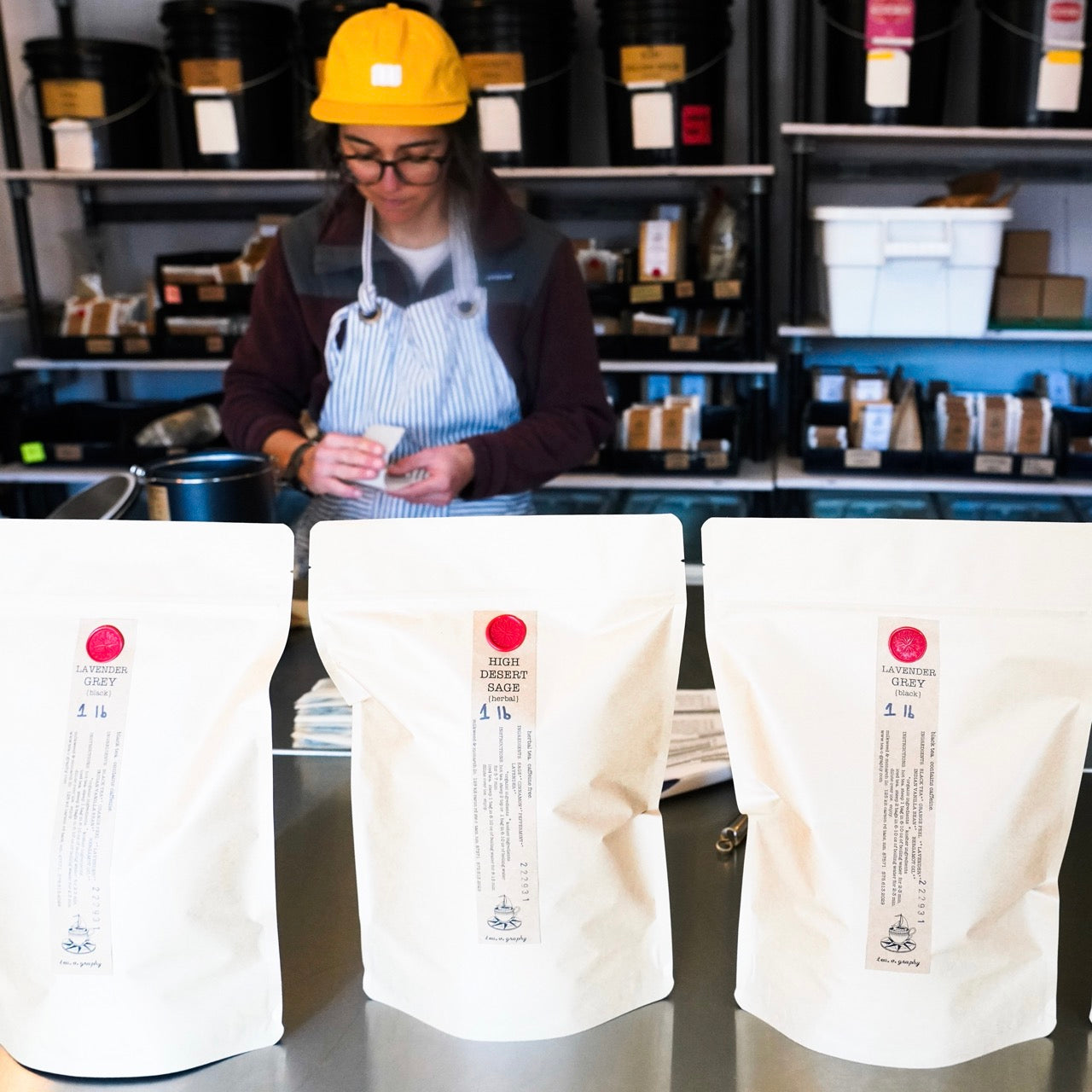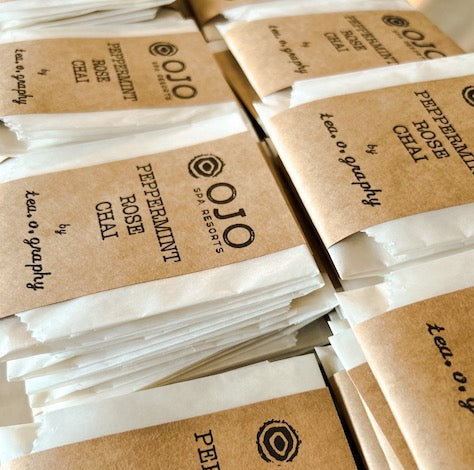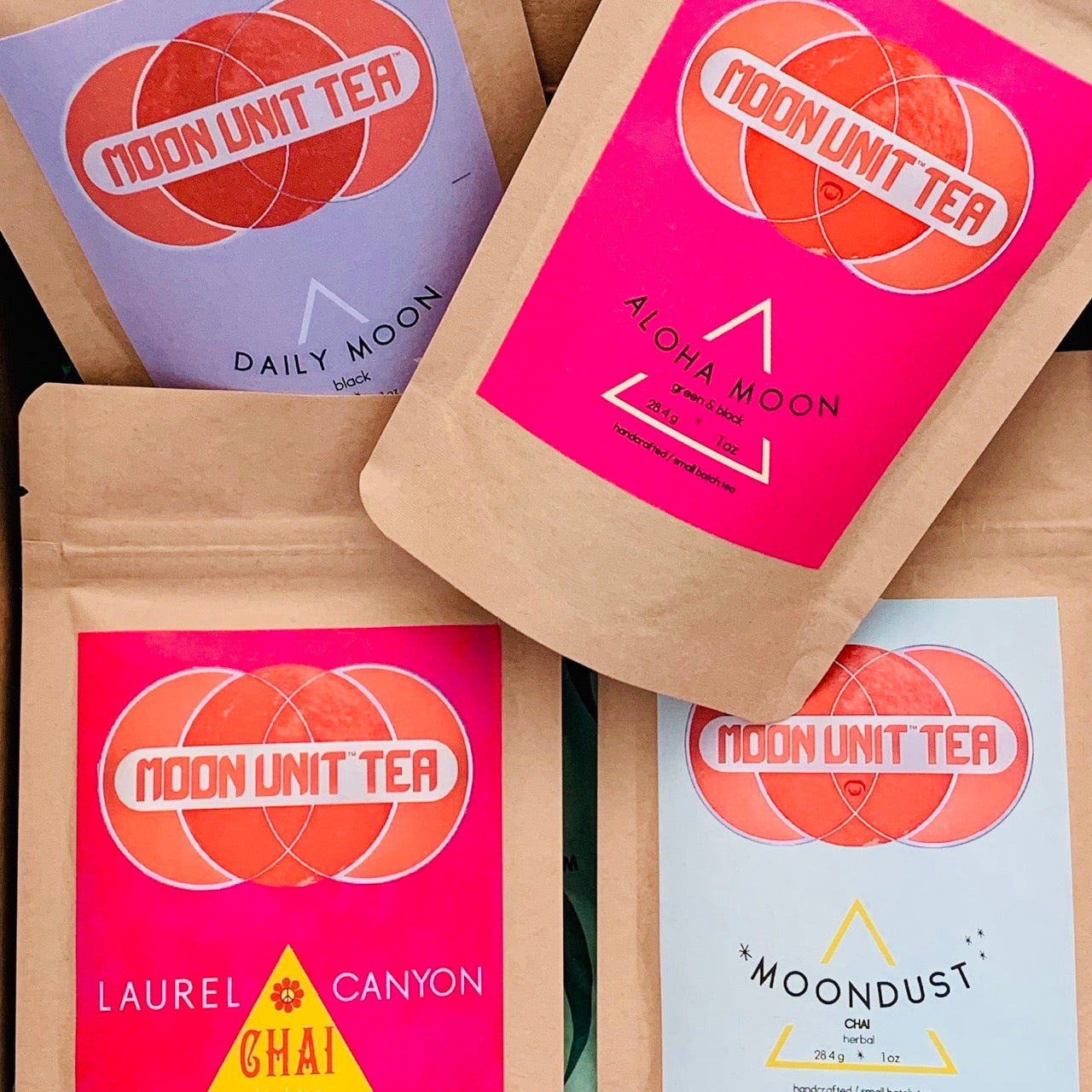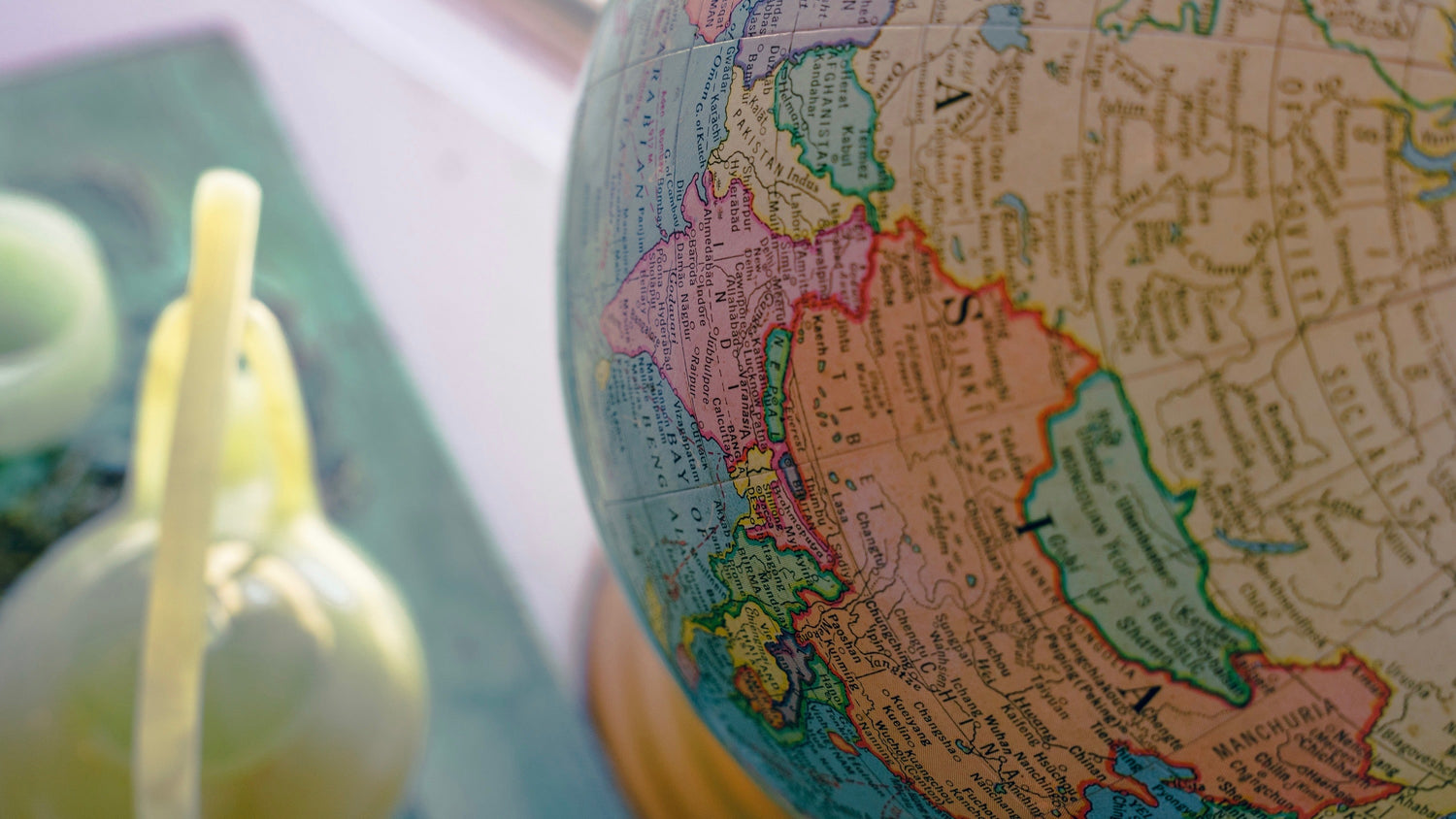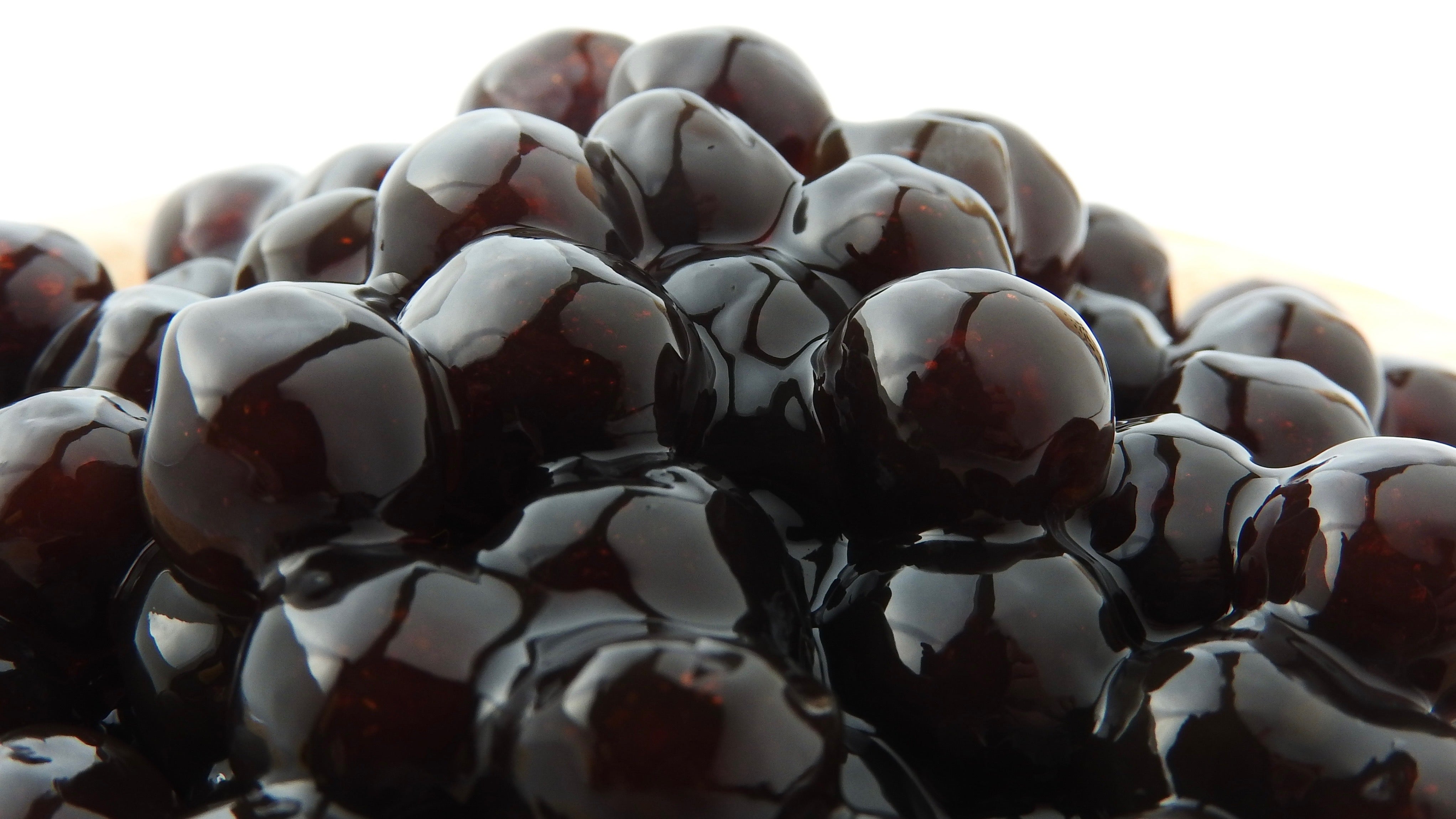We, the TEAm here at tea.o.graphy, are passionate about every aspect of tea, including its rich and diverse history.
Here we explore how our favorite beverage is tied to the world we live in...
To shed light on how many hands, lives, and stories have gone into bringing you your favorite brew. And to honor how much the simple act of brewing tea connects you to other humans throughout time and across the world.
Every tea has a unique origin story and its own special history, providing more context to cultivate a deeper enjoyment in every cup. This magical elixir has touched every corner of the globe. While tea is seemingly ubiquitous, have you ever stopped to wonder what tea is or where it came from? How did it arrive in your mug? Now that, my friends, is quite the story…
THE STORY BEHIND TEA...

Although the tea plant, technically referred to as Camellia sinensis, is now cultivated worldwide, its two distinct cultivars originate from China (Camellia sinensis sinensis) and the Assam region in India (Camellia sinensis assamica). It is widely believed that tea consumption began in Yunnan province, China, during the 2nd millennium BC as a form of medicine. From this province, Pu-erh, a rich, earthy variety of tea, can be traced back as far as the Eastern Han Dynasty (around 25-220 CE).
Initially prized for its restorative qualities, it is not known exactly when or how tea transitioned from a medicinal drink to its more casual consumption today, but there are many myths and tales.
One such story comes from Chinese legend, where the mythical figure Emperor Shennong was sipping a bowl of freshly boiled water due to a decree that his subjects must boil water before drinking it. When leaves from a nearby tree floated into his water, transforming the color and taste, the emperor took a drink and was astonished by its pleasant flavor and restorative properties. According to this tale, the appreciation of tea goes back at least five thousand years!
From a historical context, green tea production was developed around the 12th century, and has grown and changed throughout the years. With the tea leaves initially being steamed, roasting was introduced in the 16th century, along with the creation of oolong. Chinese tea traveled to Europe around 400 years ago by way of Portuguese missionaries and merchants. While it reached Great Britain in 1660, it took another hundred years or so before it became popular.
Meanwhile in India, tea had been consumed for its medicinal and mental alertness properties as far back as 750 BC. The British established tea plantations in India in the 19th century in order to compete with China's established cultivation and production at the time.
As tea spread around the world and grew in demand, there was pressure to create new ways of preserving tea for long journeys; it was discovered that methods like fermenting leaves not only kept the tea fresh but improved the flavor over time, similarly to wine. It was also found that pu-erh tea aided digestion, provided other nutrients to the diet, and, because it was so affordable, it quickly became a popular household amenity. Tea was highly prized and it became a powerful tool for bartering amongst traveling merchants.
It is important to note that dates from the history of tea are not absolutely certain. The production, introduction, and spread of variety didn’t happen at just one time but rather in concentrated bursts over centuries. Major tea growing regions now include China, India, Japan, Kenya, Taiwan, Sri Lanka (Ceylon), and elsewhere. Countless cultures and individuals have developed and contributed to the production, innovation, and ritual of tea over time, leading to your single cup, your ritual, your experience.
WHAT IS THE TEA PLANT?

Whichever type of tea you favor—white, green, oolong, black, or pu-erh—they all start out as the same leaf on the Camellia sinensis plant, a tropical to subtropical evergreen plant native to Asia that thrives in warmer climates with abundant rain.
It can take up to seven years for the leaves to mature enough to be used in the making of tea, and the plant itself can be cultivated for over a century! It has vibrant shiny green leaves with serrated edges and a coating of fine hairs underneath. The tea plant is often described as a “bush” or “shrub,” but wild tea plants can grow up to 50 feet tall! It produces small white flowers with bright yellow stamens that bloom in bunches of two to four during the autumn months. Surprisingly, the blooms also bear brownish-green fruits, which develop a hard outer shell and contain a single seed. It is important to note that in traditional tea cultivation, the plant is pruned and prevented from flowering to prioritize harvesting the leaves.
There are two main varieties that are most commonly grown:
- Camellia sinensis var. sinensis (China bush) is known for sweet, complex flavors and cultivated at higher elevations.
- The lower-elevation, high-yielding Camellia sinensis var. assamica (Assam bush) delivers a stronger, more bold flavor.
Tea plants cultivated at higher altitudes tend to grow more slowly and develop more flavor. After the tea plant is processed there are more steps before it makes it to your cup.
There are many tea purists out there that prefer more traditional methods of blending and brewing. Here at tea.o.graphy, we respect the purist’s approach to tea, and we also embrace and blend Camellia sinensis with other botanicals and spices to enhance the leaves' natural properties and create new and exciting flavor profiles.
FIVE MAJOR TEA TYPES

Beginning as the same plant, the young leaves are picked fresh and processed into the different types of teas through varying methods of oxidation and aging. To make black tea, the leaves are oxidized before being dried. It is actually the lack of oxidation that gives white and green teas their color and lightness.
Tea processing also lends to the development of the plant’s naturally occurring caffeine content. The darker aged teas generally have a higher caffeine content, and the lighter, less processed teas like white and green tend to have less caffeine, though there are always exceptions to the rule.
The five major tea types include white, green, oolong, black, and pu-erh. It is the processing of the tea leaf at its origin that determines which type of tea it will become. The leaves are generally handpicked in the spring and summer when they are still young (although some regions and varieties are picked in fall and winter) with only the bud and first few leaves picked. The leaves start out lighter green and grow darker in color and vibrancy as they age. After they are picked, the leaves are withered to remove excess water and to start the oxidation process. Tearing, rolling, or bruising the leaves can have the same effect. The chemical reaction known as oxidation transforms the fresh leaf into many shades of green to brown to black. Oxidation is the processing step with the greatest impact on determining tea type.
 WHITE
WHITE
Low Caffeine Content
White tea is the least oxidized of the processed tea leaves and therefore the closest to the natural tea plant. The processing methods of white tea do not encourage or stop oxidation, but rely on the bruising of the leaf during harvesting and transportation to allow oxidation to start on part of the leaves, producing subtle light color, aromatics, and taste.
Recommendations
- Pure Leaf: White Peony
- Blends: White Winter Chai, Jasmine Peach

GREEN
Moderate Caffeine Content
Green teas historically came from China and Japan, but the processing methods of each cultural tradition are unique and produce completely different aromatics and taste. Today, green tea is produced all over the world, but it is still defined by which processing method was used.
Green teas need to retain their fresh green color so oxidation must be limited. Heat is applied to the leaf to halt oxidation. In China, the heat source used is referred to as pan firing, which creates a smokier, nutty profile. Whereas in Japan, steam is used, which allows the leaves to have an even brighter green color and a stimulating fresh taste.
Recommendations
- Pure Leaf: Dragonwell, Gunpowder, Sencha
- Blends: Matcha Mint, Genmaicha, Fleurs de Provence

OOLONG
Moderate Caffeine
Oolongs are especially loved for their complex flavors and aromatics. The greener, less oxidized oolongs tend to have more floral notes while mid-oxidized oolongs lean toward having notes of stone fruit, and darker oolongs tend to have nutty wood notes. Due to this unique processing, they tend to have a more mellow and balanced flavor without the acidity of green or black teas. Oolongs are traditionally from Taiwan, although some oolongs are now cultivated in mainland China.
Recommendations
- Pure Leaf: Formosa Oolong
- Blends: Chocolate Rose Oolong, Black Magic

BLACK
High Caffeine Content
Black teas are fully oxidized and are characterized by their strong, full-bodied, robust, and earthy flavor profile. After harvesting, the leaves are left to wither, and go through involved oxidation processes that include rolling and firing. Black tea is strong enough to withstand milk and spices, and can withstand several steepings, making it perfect for use in breakfast teas and masala chais.
Recommendations
- Pure Leaf: Assam, Lapsang Souchong, Makaibari Estate Darjeeling
- Blends: Art of Flying Earl Grey, Coconut Chai, Woodland Walk, Georgia Peach

PU-ERH
High Caffeine Content
Pu-erh tea is known for its distinct, earthy flavor profile with notes of soil and tree bark. This particular tea experiences both oxidation and fermentation, which makes it unique among the teas.
Its fermentation process means that the tea leaves go through a microbial fermentation process after they've been dried and rolled, which makes the leaves darken and develop in flavor. This allows them to develop in flavor with age, much like wine. Pu-erh leaves are able to retain their freshness for half a century!
Historically, to achieve this, the leaves would be placed in a warm, dark, and moist cave where they would be piled and turned, sometimes taking years to fully mature. While there are still some producers who use this ancient method, modern practices often involve specialized rooms or climate-controlled environments to mimic the effects of cave aging.
Recommendations
- Pure Leaf: Yunnan Pu-erh
- Blends: Forest Floor, Sandia Rose
BUT WHAT ABOUT HERBAL TEAS & TISANES?

In tea terms, herbal teas (along with other botanicals not derived from Camellia sisensis, like yerba mate) are traditionally referred to as tisanes. Tisanes are not technically tea at all, rather they are infusions made from leaves, bark, roots, berries, seeds, and spices brewed in similar ways to the tea plant. Another foundational difference is that many, but not all, tisanes are generally naturally caffeine free, depending on what plant they are made from.
You will find on our website our caffeine-free tisanes are listed as “herbals” and many of our caffeinated tisanes (along with seasonal teas, oolongs, pu-erhs, etc) under "specialty" teas.
Recommendations
- Tisanes NO caffeine (herbal teas): Check out our herbal selection!
- Tisanes WITH caffeine: Yerba Mate, Awaken

The world of tea is vast! This is just the tip of the tea plant, if you will ;)
Return to our blog to discover more tea education and various musings. Send us a line with questions—we are always happy to share knowledge and tea!
Happy steeping, everyone!

